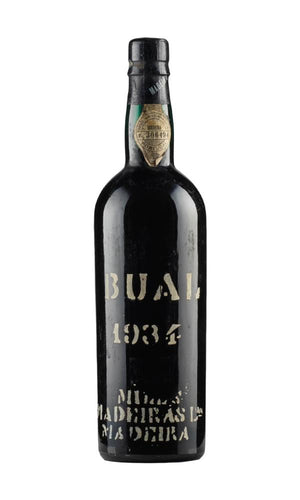- Our Shop

$2,598.99
Order from the Largest & Most Trusted Premium Spirits Marketplace!
Featured in
NOTICE: Many other small liquor store sites may end up cancelling your order due to the high demand, unavailability or inaccurate inventory counts. We have partnerships consisting of a large network of licensed retailers from within the United States, Europe and across the world ensuring orders are fulfilled.
Producer: Miles
Vintage: 1934
Size: 750ml
ABV: 20%
Varietal: Bual
Country/Region: Portugal, Madeira
Until May 2018, Miles Mossop’s day job was as winemaker at Tokara, a position he had held since the winery started-up in 2000. The agreement Miles had with GT Ferreira, the owner of Tokara, allowed him to vinify 10 tonnes of bought in grapes and put them under his own label each year. Now completely independent and now making wines in two different locations in Stellenbosch, Miles is starting to extend both production and the range he produces. Miles Mossop Wines started out as a three-wine project. The white wine, called Saskia, was first produced in 2004. It has remained pretty constant in its source and the make-up of the blend from the start. It is effectively two-thirds Chenin sourced from 30 year old Stellenbosch vineyards, and one third Viognier sourced from vines farmed by Willi Mostert on the Paardeberg side of the Swartland. More recent vintages have seen the (beneficial) addition of a barrel or two of Verdelho and Clairette, which with their lower alcohol and well-defined acidity, have made the blend a lighter stricter and more linear. All the components are fermented individually in older barrels and left on its lees for added complexity. Blending is only completed just prior to bottling. The Chenin generally goes through a partial malo-lactic fermentation, whilst the Viognier enjoys a full conversion. The wine is named after Saskia-Jo, Miles and Samantha’s elder daughter. In 2006, the accompanying red wine was launched. Max, named after their son, was a 6,000 bottle blend from the 2004 vintage, made up of Cabernet (56%), Petit Verdot (22%) from Bellevue in Stellenbosch, and Merlot (22%) from Zelma Long’s Vilafonté vineyard in Paarl. The wine spent a total of 20 months in 40% new French oak and won a Gold Medal at the well-respected Old Mutual Trophy Show. The blend for the 2005 was 56% unirrigated Cabernet Sauvignon from Bellevue, 20% Petit Verdot from the same source and (since Vilafonté built their own production facility and Miles was no longer making their Merlot component at Tokara), the source was replaced by fruit from a friend’s farm in Banghoek valley, a relatively cool location off the Helshoogte Pass. This also means that since the source for the Merlot switched, the wine was also entitled to the Wine of Origin Stellenbosch appellation.
Only logged in customers who have purchased this product may leave a review.
Bourbon Bridges Ltd ©2024 Privacy Policy

THE ALCOHOL PRODUCTS ON THIS WEBSITE ARE INTENDED FOR ADULTS ONLY.
By entering this website, you certify that you are of legal drinking age in the location in which you reside (age 21+ in the United States).
Reviews
There are no reviews yet.